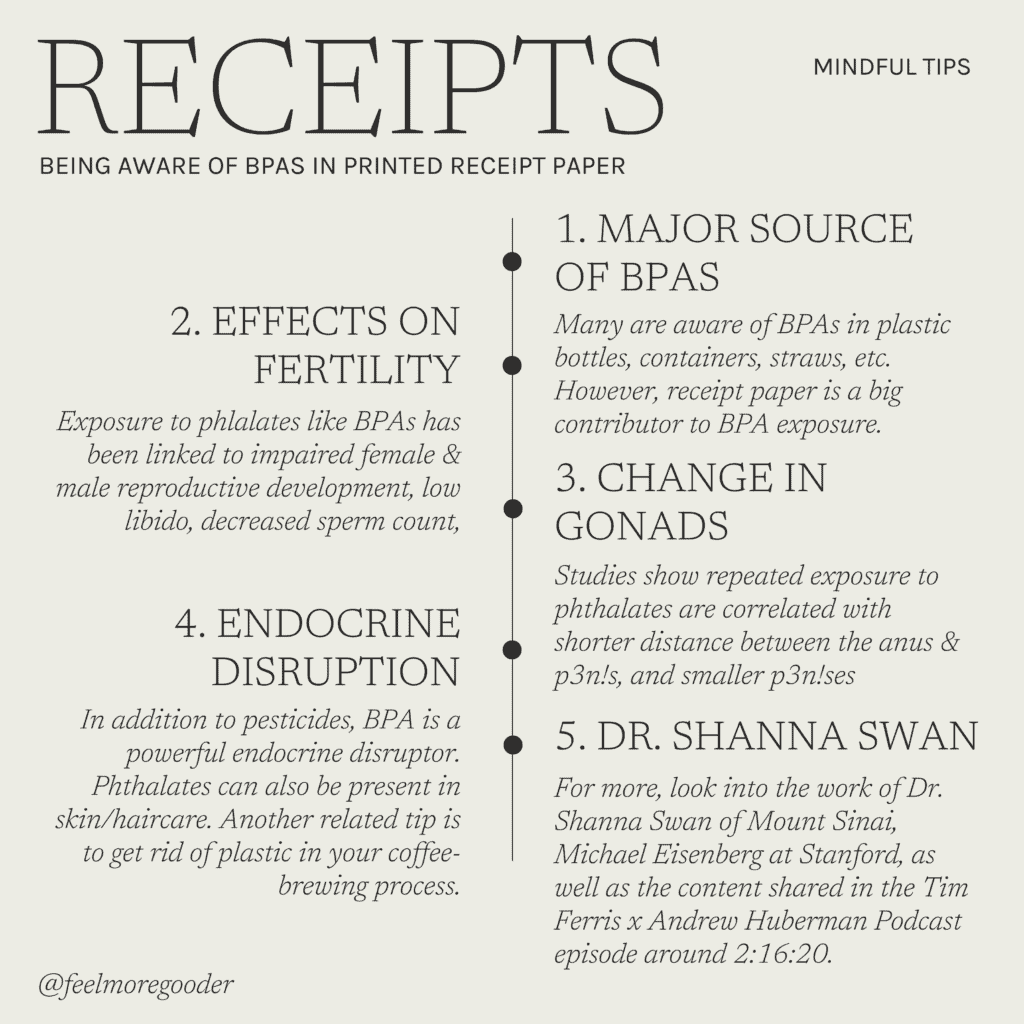The Truth About Receipt Paper and BPA: What You Need to Know
We’ve all been there: grabbing a receipt after a purchase, absentmindedly crumpling it in our hands or tucking it away in our wallets. But have you ever stopped to consider what that seemingly innocuous piece of paper is made of? The answer, especially concerning thermal receipt paper, has sparked considerable debate: Bisphenol A (BPA). This article dives deep into the science behind receipt paper, the presence of BPA, potential health concerns, and the alternatives available, providing you with a comprehensive understanding of this often-overlooked everyday item.
What is Thermal Receipt Paper?
Thermal receipt paper isn’t your average everyday paper. It’s a specialized type of paper coated with a chemical that changes color when exposed to heat. This process, which requires no ink, is what allows the text and images to appear on the receipt.
- Key Components:
- Base Paper: The foundation, typically made from wood pulp.
- Coating: This is where the magic happens, containing:
- Color-forming dye: Usually a colorless dye.
- Developer: A chemical that reacts with the dye to produce color.
- Sensitizers: Chemicals that help the dye and developer react efficiently.
The Role of BPA in Thermal Receipt Paper
BPA (Bisphenol A) has historically been used in the developer coating of many thermal receipt papers. It acts as a color developer, contributing to the crisp, clear print we see on our receipts.
- How it Works:
- When heat from the thermal printer head is applied, the BPA reacts with the dye and developer, creating a visible image.
The Controversy: Potential Health Concerns and BPA
The primary concern surrounding BPA in receipt paper stems from its potential for absorption through the skin. BPA is an endocrine disruptor, meaning it can mimic or interfere with the body’s hormones, potentially leading to various health problems.
- Potential Risks (Based on research, not definitive proof):
- Hormonal Disruption: Can interfere with the endocrine system.
- Reproductive Issues: Some studies suggest a link to decreased fertility.
- Developmental Problems: Concerns exist regarding potential impacts on fetal development.
- Cardiovascular Issues: Some studies have linked BPA exposure to increased risk of heart disease.
Important Note: The extent of BPA absorption from handling receipts is a subject of ongoing research, and the actual risk is debated. However, the potential for absorption and the endocrine-disrupting properties of BPA are the main drivers of consumer concern.
BPA-Free Alternatives: A Safer Solution?
Due to growing concerns, many manufacturers have transitioned to BPA-free thermal receipt paper. These alternatives utilize different chemicals to achieve the same color-forming effect.
Common BPA-Free Alternatives:
- Bisphenol S (BPS): Often used as a replacement for BPA, but some studies suggest similar endocrine-disrupting properties.
- Bisphenol F (BPF): Another alternative, also under scrutiny for potential health concerns.
- Other Developers: Manufacturers may use other chemical compounds, but it’s essential to inquire about the specific chemicals used.
Important Considerations for BPA-Free Alternatives:
- Potential for Similar Risks: While BPA-free, some alternatives may still pose health risks.
- Verification: Look for certification or labeling indicating the specific chemicals used.
- Ongoing Research: The long-term health effects of these alternatives are still being investigated.
Best Practices: Minimizing Exposure to BPA and Alternatives
Regardless of the type of thermal paper used, there are steps you can take to minimize your exposure to potentially harmful chemicals:
- Handle Receipts Minimally: Avoid unnecessary contact with receipts.
- Wash Your Hands: Wash your hands thoroughly after handling receipts, especially before eating.
- Store Receipts Properly: Store receipts separately from food and avoid storing them in wallets or purses for extended periods.
- Ask for Digital Receipts: Opt for digital receipts whenever possible.
- Be Informed: Stay updated on the latest research and developments regarding receipt paper and its chemicals.
Conclusion: Navigating the World of Receipts
The truth about receipt paper and BPA is complex. While BPA has been widely used, its potential health risks have prompted a shift towards BPA-free alternatives. However, these alternatives may also pose potential health concerns. By understanding the science, practicing safe handling, and staying informed, you can minimize your exposure to potentially harmful chemicals and make informed choices about the receipts you handle every day. The best approach is to be proactive, seek digital alternatives, and support businesses committed to transparency and safer practices.
Frequently Asked Questions (FAQs)
1. Is all thermal receipt paper made with BPA?
No, while BPA was commonly used, many manufacturers have switched to BPA-free alternatives. However, it’s essential to check for labeling or inquire about the specific chemicals used.
2. Are BPA-free receipts completely safe?
While BPA-free receipts eliminate BPA, some alternatives, like BPS and BPF, may still pose potential health risks. The long-term effects of these alternatives are still being researched.
3. How can I tell if a receipt contains BPA?
Unfortunately, there’s no easy way to visually determine if a receipt contains BPA. Look for labeling or ask the retailer if they use BPA-free paper.
4. Should I be worried about handling receipts?
The level of risk from handling receipts is still being debated. However, it’s wise to minimize contact, wash your hands after handling them, and opt for digital receipts whenever possible.
5. What are the best alternatives to thermal receipts?
Digital receipts are the safest alternative. You can also ask for paper receipts printed on non-thermal paper or opt for a record of your purchase via email or a mobile app.




